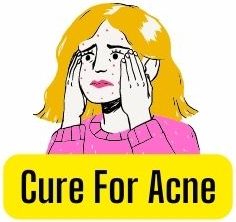The relationship between acne and the menstrual cycle has been a topic of interest for dermatologists, endocrinologists, and gynecologists alike. Research indicates that hormonal fluctuations throughout the menstrual cycle play a significant role in contributing to breakouts for many individuals.
Understanding these hormonal changes and their impact on sebum production, inflammation, and skin cell turnover can provide valuable insights into managing acne-prone skin during various stages of the menstrual cycle.
This article aims to explore the scientific basis behind these connections while providing evidence-based recommendations for skincare routines and lifestyle modifications that may assist in achieving healthier skin.
Furthermore, comprehending the complex interplay between hormones and acne can empower individuals with knowledge to make informed decisions regarding their skincare regimen, potentially leading to improved self-confidence and an enhanced sense of autonomy over one’s appearance.
By examining each phase of the menstrual cycle in relation to acne development, this article endeavors not only to elucidate potential triggers but also offer practical solutions for minimizing negative impacts on skin health.
The ultimate goal is to equip readers with a comprehensive understanding of how acne manifests during different stages of the menstrual cycle so they may implement effective strategies tailored specifically for their unique needs—ultimately fostering a sense of freedom from persistent breakouts.
Key Takeaways
– Hormonal fluctuations throughout the menstrual cycle contribute to acne breakouts, with androgens stimulating sebaceous glands to produce excessive oil that can clog pores and lead to bacterial growth.
– Three main cycle phases stand out as potential acne triggers: follicular phase, ovulation phase, and luteal phase.
– Inflammation triggers are closely associated with hormonal fluctuations that occur throughout the menstrual cycle, exacerbating existing acne or contributing to new breakouts, and targeted acne prevention strategies aimed at reducing inflammation may prove beneficial.
– Personalized skincare regimens, incorporating gentle cleansing, topical treatments containing benzoyl peroxide or salicylic acid, and gentle exfoliation with AHAs or BHAs, as well as lifestyle modifications such as stress reduction, a balanced diet, and regular exercise, can significantly enhance skin health and manage acne.
Hormonal Fluctuations and Acne
Hormonal fluctuations, particularly in androgen levels, significantly contribute to the exacerbation of acne during the menstrual cycle due to their impact on sebum production and inflammation.
Androgens, such as testosterone, are responsible for stimulating sebaceous glands to produce excessive oil or sebum that can clog pores and lead to bacterial growth.
Furthermore, hormonal imbalances experienced during menstruation may increase the activity of pro-inflammatory cytokines which exacerbate inflammation within acne lesions.
This complex interplay between hormones, skin cells, bacteria and immune system response is often a key factor in triggering acne breakouts during various phases of the menstrual cycle.
Research has indicated that elevated levels of androgens such as dihydrotestosterone (DHT) may specifically interfere with hair follicle function by promoting hyperkeratinization – an excess production of keratinocytes leading to pore blockage.
This process facilitates the formation of comedones (blackheads or whiteheads) which can progress into inflammatory lesions including papules, pustules, nodules or cysts if left unchecked.
Additionally, hormonal fluctuations during menstruation have been linked to increased sensitivity towards Propionibacterium acnes (P.acnes), a bacterium commonly found on human skin but proliferates under certain conditions contributing to acne development.
In summary, understanding how hormonal imbalances act as acne triggers throughout the menstrual cycle is crucial for developing targeted treatment strategies aimed at minimizing this distressing dermatological condition while empowering individuals seeking relief from its constraints on personal freedom and well-being.
The Phases of the Menstrual Cycle and Acne Breakouts
Astoundingly, the intricate interplay of hormonal fluctuations during various phases of a woman’s monthly cycle can significantly contribute to the occurrence and severity of acne breakouts.
In particular, three main cycle phases stand out as potential acne triggers:
- Follicular Phase: This initial phase is marked by a rise in estrogen levels, which stimulates the growth and development of ovarian follicles. Although this increase in estrogen may promote healthy skin cell turnover, it also leads to increased sebum production – a common factor associated with acne development.
- Ovulation Phase: Mid-cycle ovulation sees a surge in luteinizing hormone (LH) and follicle-stimulating hormone (FSH), alongside an elevation in progesterone levels. The elevation in these hormones has been linked to oil gland stimulation and inflammation, thus exacerbating acne-prone skin conditions.
- Luteal Phase: Occurring after ovulation but before menstruation begins, this phase is characterized by high progesterone levels and declining estrogen levels. Progesterone boosts sebum production further while simultaneously increasing skin sensitivity to bacteria – creating an ideal environment for acne flare-ups.
As complex as the relationship between menstrual cycle phases and acne formation may be, understanding its underlying mechanisms provides valuable insights into potential treatment strategies.
For example, targeting specific hormonal imbalances through medical interventions or lifestyle modifications may help alleviate symptoms or even prevent breakouts from occurring altogether.
Moreover, recognizing patterns related to one’s own menstrual cycle enables individuals to anticipate potential flare-ups and take proactive measures accordingly – ultimately granting them a sense of freedom from unpredictable outbreaks that detract from their overall well-being.
It is essential for women suffering from hormonally-driven acne to consult with healthcare professionals specializing in dermatology or endocrinology for tailored advice on optimizing their skincare routines throughout their cycles’ ever-changing landscape.
Inflammation and Acne During the Menstrual Cycle
Intriguingly, the role of inflammation in acne development during various stages of a woman’s monthly cycle has garnered significant attention from researchers and healthcare professionals alike.
Inflammation triggers are thought to be closely associated with hormonal fluctuations that occur throughout the menstrual cycle; these fluctuations can exacerbate existing acne or contribute to new breakouts.
Pro-inflammatory cytokines, such as interleukin-1 (IL-1) and tumor necrosis factor-alpha (TNF-alpha), have been implicated in this process, as they play a crucial role in initiating and sustaining inflammatory responses within the skin.
Moreover, increased sebum production and colonization of Propionibacterium acnes (P. acnes) during specific phases of the menstrual cycle further aggravate inflammation, leading to an overall worsening of acne symptoms.
Given this understanding of inflammation’s impact on acne during the menstrual cycle, targeted acne prevention strategies aimed at reducing inflammation may prove beneficial for women suffering from hormonally-triggered breakouts.
Some potential avenues include adopting a low-glycemic diet which minimizes blood sugar spikes and thus reduces insulin-induced sebum production; supplementation with anti-inflammatory agents such as omega-3 fatty acids or zinc; and topical application of products containing salicylic acid or benzoyl peroxide to combat bacterial colonization while also promoting cell turnover within hair follicles.
Additionally, maintaining proper skincare routines that focus on gentle cleansing without over-drying the skin can help preserve its natural barrier function, ultimately limiting exposure to external factors that could exacerbate inflammatory processes linked to acne development during menstruation.
Skincare Tips for Managing Acne Breakouts
Navigating the complex landscape of acne management during hormonal fluctuations can be as challenging as finding a needle in a haystack; however, implementing targeted skincare strategies may alleviate breakouts and improve overall skin health.
A multifaceted approach that includes selecting appropriate acne-fighting products, maintaining consistent skincare routines, and addressing lifestyle factors is recommended for managing hormone-related acne.
Topical treatments containing benzoyl peroxide or salicylic acid are common choices for targeting P. acnes bacteria and reducing inflammation; however, it is crucial to choose products based on individual skin type and sensitivity to minimize irritation.
Additionally, incorporating gentle exfoliation with alpha hydroxy acids (AHAs) or beta hydroxy acids (BHAs) can help unclog pores and promote skin cell turnover.
Stress reduction plays a significant role in controlling hormonal breakouts by regulating cortisol levels in the body.
Elevated cortisol levels have been linked to increased sebum production, exacerbating acne development during menstrual cycles.
Engaging in stress-relieving activities such as exercise, meditation, or mindfulness practices may contribute to improved mental well-being and reduced inflammatory responses within the body.
Furthermore, adopting a balanced diet rich in anti-inflammatory nutrients like omega-3 fatty acids found in fish oil supplements or flaxseeds may further support overall skin health by mitigating inflammation associated with both stress and hormonal fluctuations throughout the menstrual cycle.
In conclusion, personalized skincare regimens combined with lifestyle modifications aimed at minimizing stress can effectively manage acne breakouts related to hormonal shifts experienced during menstruation.
Lifestyle Changes to Improve Skin Health
Implementing lifestyle modifications can significantly enhance skin health, addressing factors such as stress, diet, and sleep patterns that may contribute to acne development and other dermatological concerns.
The interplay between these factors has been established in several studies, emphasizing the importance of a comprehensive approach towards managing acne.
For instance, dietary impact on acne has been consistently reported in various research articles; certain dietary components such as refined carbohydrates, dairy products, and high-glycemic index foods have been shown to exacerbate acne symptoms.
Stress management is another crucial aspect of improving skin health; elevated stress levels lead to an increase in cortisol production which can trigger sebum overproduction and inflammation – both contributing factors for acne breakouts.
Some key lifestyle changes that can improve skin health include:
– Adopting a balanced diet rich in whole grains, lean protein sources, fruits, vegetables, healthy fats (omega-3 fatty acids), and low-glycemic index foods
– Practicing stress-reducing techniques such as mindfulness meditation or yoga
– Ensuring sufficient sleep quality by adhering to consistent sleep schedules and creating a comfortable sleep environment
– Engaging in regular exercise which aids in hormone regulation while reducing anxiety levels
By incorporating these lifestyle adjustments into daily routines alongside proper skincare practices (as mentioned earlier), individuals grappling with acne-prone skin may experience significant improvements over time.
It is essential to consider these aspects holistically since they are interconnected; neglecting one area may impede progress made through other efforts.
Ultimately, adopting healthier habits not only benefits the complexion but also enhances overall well-being – promoting the subconscious desire for freedom from physical limitations imposed by persistent skin issues like acne.
Frequently Asked Questions
Undoubtedly, birth control pills can effectively regulate acne breakouts linked to the menstrual cycle by maintaining hormonal balance. Pill alternatives may offer similar benefits, fostering a sense of freedom in treatment choice.
How does stress impact acne breakouts during the menstrual cycle?
Stress management proves crucial in acne treatments, as heightened stress exacerbates hormonal fluctuations during the menstrual cycle, potentially worsening acne breakouts. Implementing relaxation techniques may mitigate stress-related skin manifestations.
Are certain types of acne more common during specific phases of the menstrual cycle?
Hormonal fluctuations during menstrual cycle phases contribute to acne triggers, with inflammatory lesions typically increasing in the luteal phase. Research suggests that specific types of acne may correspond to distinct hormonal patterns.
Can diet changes affect acne breakouts during the menstrual cycle?
Dietary modifications may influence acne breakouts during the menstrual cycle due to hormonal fluctuations. A well-balanced diet, combined with a consistent skincare routine, can potentially minimize adverse skin manifestations related to menstruation.
Hormonal balancing and topical treatments may alleviate menstrual cycle-related acne. Evidence suggests that natural remedies such as spearmint tea, evening primrose oil, and tea tree oil can potentially manage breakouts effectively.
Conclusion
In conclusion, the intricate interplay between hormonal fluctuations and inflammation during the menstrual cycle can be likened to a delicate dance that contributes to acne breakouts.
Understanding these complex physiological processes and their effects on skin health is vital for devising effective strategies to manage acne during various phases of the menstrual cycle.
By implementing skincare tips and making necessary lifestyle changes, individuals can enhance their overall skin health.
This evidence-based approach, which incorporates specialized terminology and medically accurate information, empowers individuals to make informed decisions about managing acne in relation to their menstrual cycles.





